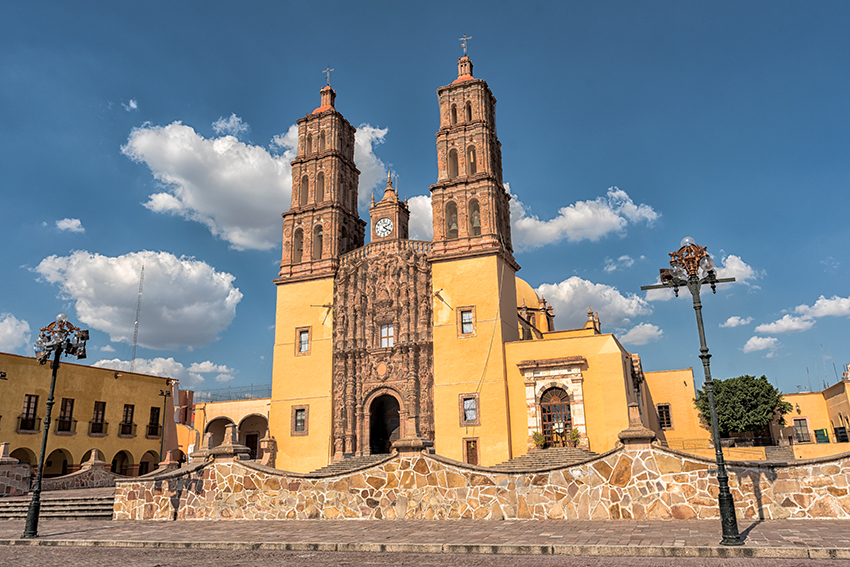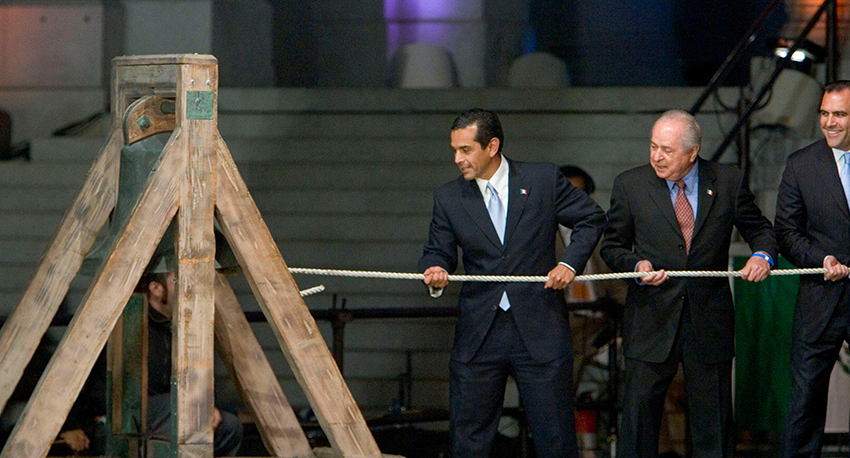Today, a shout rises from the Plaza de la Constitución (commonly called the Zócalo), beneath the balcony of the National Palace in México City. ¡Viva México! Over half a million spectators join in the cry. It is the start of México’s independence celebrations and, like any good event, it features the ringing of a bell.
The impassioned grito de Dolores or ‘cry of Dolores’ has been celebrated annually for over 200 years. Fittingly, while the grito de Dolores takes its name from the small town of Dolores, México, near Guanajuato, the word dolores can also be translated as ‘pains.’ Indeed, the people of the Viceroyalty of New Spain, as the territory was then known, labored under foreign occupation and colonial rule. Enough was enough.
In the early morning hours of Sept. 16, 1810 (around 2:30am), a cry rang out from the Our Lady of Sorrows Parish, where the local Roman Catholic priest, Don Miguel Gregorio Antonio Ignacio Hidalgo y Costilla y Gallaga Mandarte Villaseñor (we’ll call him Hidalgo) ordered his church bells to be rung to summon his parishioners. In a fiery address, he excoriated the ruling Spanish government and urged the people to revolt. His compelling and dramatic speech, which ignited a decade of war in pursuit of independence, became known as the ‘cry of Dolores.’

Image: Parroquia de Nuestra Señora de Dolores, or Our Lady of Sorrows Parish, in Dolores Hidalgo, Guanajuato, México.
The recitation
While Hidalgo’s exact words are debated, scholars generally agree that he challenged his people to throw off the yoke of European colonial oppression and to refuse to remain slaves of Napoleon (who then occupied Spain in the First French Empire). He chanted “Death to bad government!” with such vociferous conviction, that each year on Sept. 15, the President of México initiates the following day’s independence ceremonies with a reenactment.
At around 11:00pm, the president emerges on the balcony of the National Palace and rings the same bell that Hidalgo rang in 1810 (given its national and symbolic importance, the bell now resides in the National Palace). He then recites a shout of patriotism loosely based on the original grito. The language varies a bit from year to year, but always includes the heroes of the revolution and threefold shouts of ¡Viva México!

Image: Holding aloft the national flag and accompanied by his wife, Beatriz Gutiérrez Müller, President of México Andrés Manuel López Obrador rings the bell during a Grito de Dolores ceremony marking the 213th anniversary of the beginning of the fight for Mexican independence, in the Zócalo in Mexico City, México, on Sept. 15, 2023.
This is the version of the grito most often recited:
¡Mexicanos!
¡Vivan los héroes que nos dieron patria!
¡Viva Hidalgo!
¡Viva Morelos!
¡Viva Josefa Ortiz de Domínguez!
¡Viva Allende!
¡Viva Aldama y Matamoros!
¡Viva la Independencia Nacional!
¡Viva México! ¡Viva México! ¡Viva México!
In English, that translates to: “Mexicans! Long live the heroes who gave us our homeland! Long live Hidalgo! Long live Morelos! Long live Josefa Ortiz de Domínguez! Long live Allende! Long live Aldama and Matamoros! Long live the nation's independence! Long live México! Long live México! Long live México!”
The crowd responds to each incantation with their own ¡viva! before the bell is rung one last time. A spectacular array of fireworks and the playing of the Mexican national anthem conclude the evening’s festivities. In some years, commonly the final in a presidential term, the president travels to Dolores (renamed Dolores Hidalgo to honor the father of Mexican independence) to ring the bell where the events originally happened two centuries ago.

Image: Mayor of Los Angeles Antonio Villaraigosa (left) is joined by other officials in ringing the bell during a Grito de Dolores ceremony on the steps of Los Angeles City Hall in Los Angeles, California, on Sept. 15, 2006. Courtesy: Armando Arorizo, ZUMA Press.
Similar celebrations occur across the world, particularly at Mexican embassies and consulates or wherever one may find a large population of people with Mexican heritage. The presiding official (whether an ambassador, dignitary, or even principal of a school) leads the grito and traditional flag waving, and rings whichever bell may be close at hand. This year, join in the fun! Find a bell and ring along with all of México in a jubilant celebration of independence.
Cover image: Exhibition painting of Hidalgo delivering the Grito de Dolores with a bell overhead, on display in the Museo de la Independencia Nacional in Dolores Hidalgo, México.

